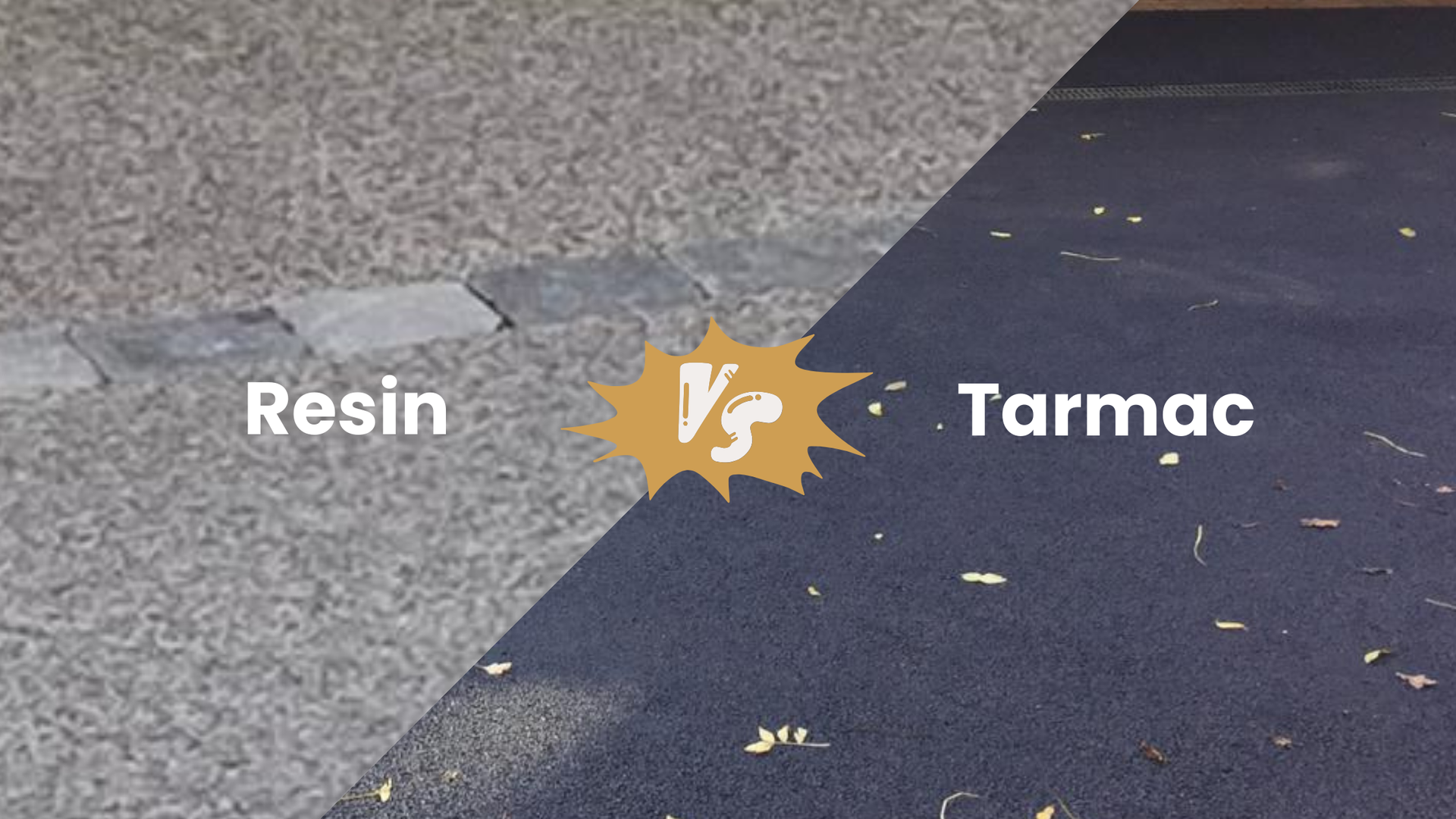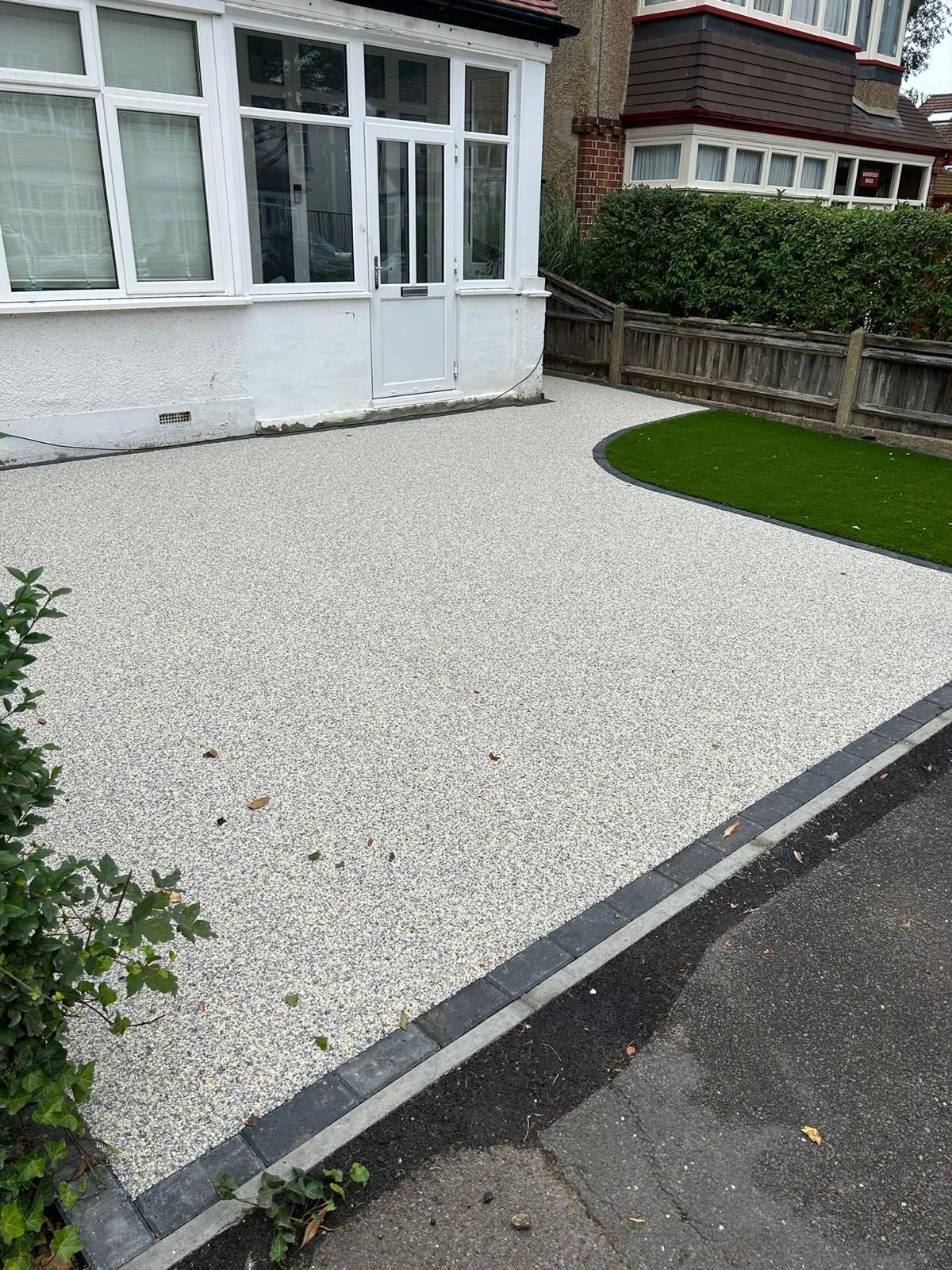We will beat ANY like for like quotation with fully guaranteed work! Contact us today for your free quote.
How to Prepare Your Driveway for Frost and Snow

Preparing your driveway for frost and snow is an essential task for UK homeowners as winter approaches. Cold weather can have a striking impact on your driveway, leading to cracks, discolouration, and even more severe structural damage if not properly managed. While our winters may not match the heavy snows of colder climates, the frequent freeze-thaw cycles in the UK can still wreak havoc. With the right preparation, though, you can ensure that your driveway remains strong and functional through the colder months. In this comprehensive guide, we’ll explore the best methods to protect your driveway before the frost sets in.
Why Is Winter Maintenance Important?
Driveways are exposed to constant wear and tear throughout the year, but winter poses unique challenges because of the fluctuating temperatures. During a freeze-thaw cycle, water can seep into the small cracks in your driveway’s surface. When temperatures drop below freezing, the water freezes and expands, pushing the material apart. Once temperatures rise and the ice thaws, the water leaves behind larger cracks and spaces, progressively weakening the structure.
This process doesn’t just happen once – in the typical UK winter, it can occur several times over weeks. Without proper maintenance, these cracks accumulate, leading to costly repairs.
Step 1: Thorough Cleaning and Inspection
Before the first frost arrives, it’s essential to clean your driveway thoroughly. Over time, debris, dirt, and organic material like leaves can build up, especially in cracks or rough edges. If not removed, this debris can absorb water, enhancing the risk of frost damage.
Cleaning Tips:
- Sweep away leaves, branches, and dirt using a stiff-bristled broom.
- Use a pressure washer to remove stubborn grime and moss from the surface.
- Ensure that any drainage channels around the driveway are clear to allow water to flow away quickly.
Once cleaned, conduct a thorough inspection of the surface to identify any existing damage. Look for cracks, holes, or areas where the surface is uneven. It’s crucial to address these early to prevent them from worsening with winter’s freeze-thaw cycles.
Step 2: Repair Cracks and Pot-Holes
Even minor cracks in your driveway need attention before winter. Left untreated, they can lead to more significant problems as water seeps in and freezes. Depending on the material of your driveway — whether tarmac, concrete or another surface — you’ll need to use the right repair products.
For Concrete Driveways:
- Use a quality concrete filler to seal any minor cracks. Be sure to smooth the surface after applying to keep the driveway level.
- Larger cracks or potholes may require resurfacing.
For Tarmac Driveways:
- Tarmac can become brittle over time, so fill any small cracks with tarmac patching material that can bond with the existing surface.
- If there are larger holes, consider calling a professional to apply a new tarmac layer over affected areas to ensure integrity.
These repairs may seem minor now, but they can save you from the need for an entire driveway replacement in the future.
Step 3: Seal the Driveway
Sealing your driveway is one of the most effective ways to protect it from moisture during the winter months. A quality sealer creates a protective layer that helps repel water, stopping it from seeping into vulnerable areas. It also protects the surface from the chemicals often found in de-icing products, which may degrade certain types of driveways.
When to Apply Sealer:
Ideally, sealing should be done before the cold weather sets in, as the process requires dry and relatively mild conditions. Autumn is the perfect time to do this in the UK. Sealing should be done every 2 to 3 years, depending on the type of driveway material.
Types of Sealers:
- Acrylic Sealers for quick-drying and fast water protection, suitable for concrete driveways.
- Bitumen-based sealers for tarmac driveways, providing a durable, weatherproof finish.
Before applying any sealer, follow the manufacturer’s instructions – ensure the driveway is completely clean and make sure there is no rainfall in the forecast. For best results, apply the sealer with a roller or spray, ensuring an even coat.
Step 4: Address Drainage Issues
The importance of proper drainage cannot be overstated. Without effective drainage systems, sitting water can quickly freeze and cause extreme damage to your driveway.
- Clear Gutters and Drains: Check that any gutters or drainage systems around your property are clear of debris to direct water away from your driveway.
- Install Drainage Channels: If water tends to pool in certain areas of your driveway after heavy rain, it’s a good idea to look into installing additional drainage channels. These can be fitted along the edges to redirect water before it freezes.
Ensuring there’s no standing water will nip many potential issues in the bud.
Step 5: Make Plans for Winter Maintenance
Once winter arrives, there are steps you can take to continue protecting the driveway during the colder months:
Snow and Ice Removal:
If significant snow or ice does occur:
Use a Plastic Shovel: Opt for a plastic shovel rather than a metal one, as this will help avoid scratching or chipping the driveway surface.
Spread Salt Sparingly: Salt is effective at melting snow and ice, but too much can be harmful to certain surfaces, especially tarmac. If necessary, consider using products specifically designed for driveways, such as calcium-based de-icers, which are gentler on materials.
Anti-Ice Coatings:
Consider applying an anti-ice solution before snow occurs. Available from most hardware stores, these coatings work by preventing ice from bonding to the surface, making subsequent cleaning far easier.
Step 6: Consider Winter-Friendly Driveway Materials
If you are planning to install a new driveway or resurface an existing one, consider opting for a material that is better suited to frost and snow. Block paving, tarmac or concrete, when combined with snow and frost-resistant sealers, can be highly durable. Additionally, permeable materials allow better water drainage, minimising the risk of freeze-thaw damage.
For any new installations or repairs, it’s worth consulting with a professional groundworks company, especially when it comes to ensuring proper drainage systems and the right protective finishes are applied.
Final Thoughts
Preparing your driveway for frost and snow is an essential task for maintaining its appearance and structure throughout the winter. By cleaning, inspecting, and repairing damage early on, you can prevent water from entering cracks and causing significant problems when it freezes. Sealing the surface and ensuring proper drainage systems are in place will keep your driveway in top condition, regardless of what winter throws your way.
If you notice significant damage or if repairing your driveway seems like a daunting task, professional groundworks companies, such as S&T Groundworks, are always available to help. A properly prepared driveway won’t just look better; it will also save you money and time in the long run by avoiding the need for major repairs once the cold season has passed. Contact us today for a free quote and ensure your driveway is ready to handle whatever the winter weather brings.
FAQs
1. How often should I reseal my driveway?
- It depends on the material, but typically every 2 to 3 years is advisable. If you notice water pooling or fading of the surface colour, it may be time to reapply.
2. What’s the best way to remove ice from a concrete driveway?
- Use a plastic shovel to avoid damage and opt for calcium-based de-icing products, which are safer than harsh salts.
3. Should I repair my driveway cracks myself or hire a professional?
- Small, superficial cracks can usually be repaired as a DIY project. However, larger issues, particularly with drainage or bigger potholes, may require the expertise of a professional groundworks company.
By following these steps, you can protect your driveway from winter's worst and keep it in optimum condition for years to come.
Get A Free No-obligation Quote
The Leading Experts for Driveways, Paving, and Landscaping
Create the driveway or patio of your dreams with S&T Groundworks. Get a free quote today and let our expert team craft a beautiful, durable outdoor space. We offer a wide range of options, including resin, tarmac, and block paving.
Secure your free quote now and let S&T Groundworks build you a driveway or patio you’ll love for years.
Business Hours
Mon - Fri 8:00 am - 6:00 pm
Saturday 9:00 am - 4:00 pm
Sunday Closed
Links
Locations Covered by S&T
© Copyright 2024 | All Rights Reserved | Privacy Policy | Terms of Use | S&T Groundworks | Website built by Winston Web Co




